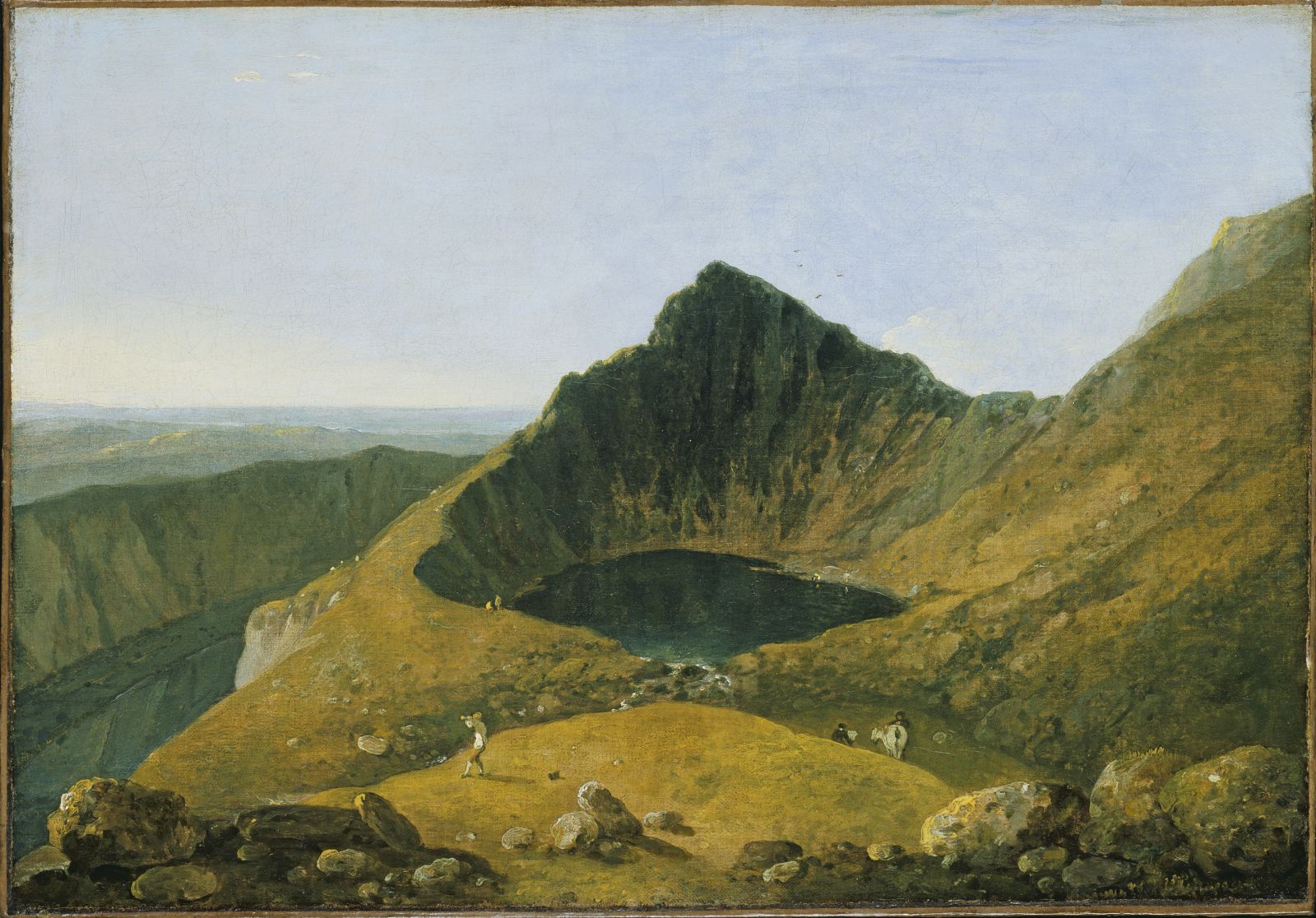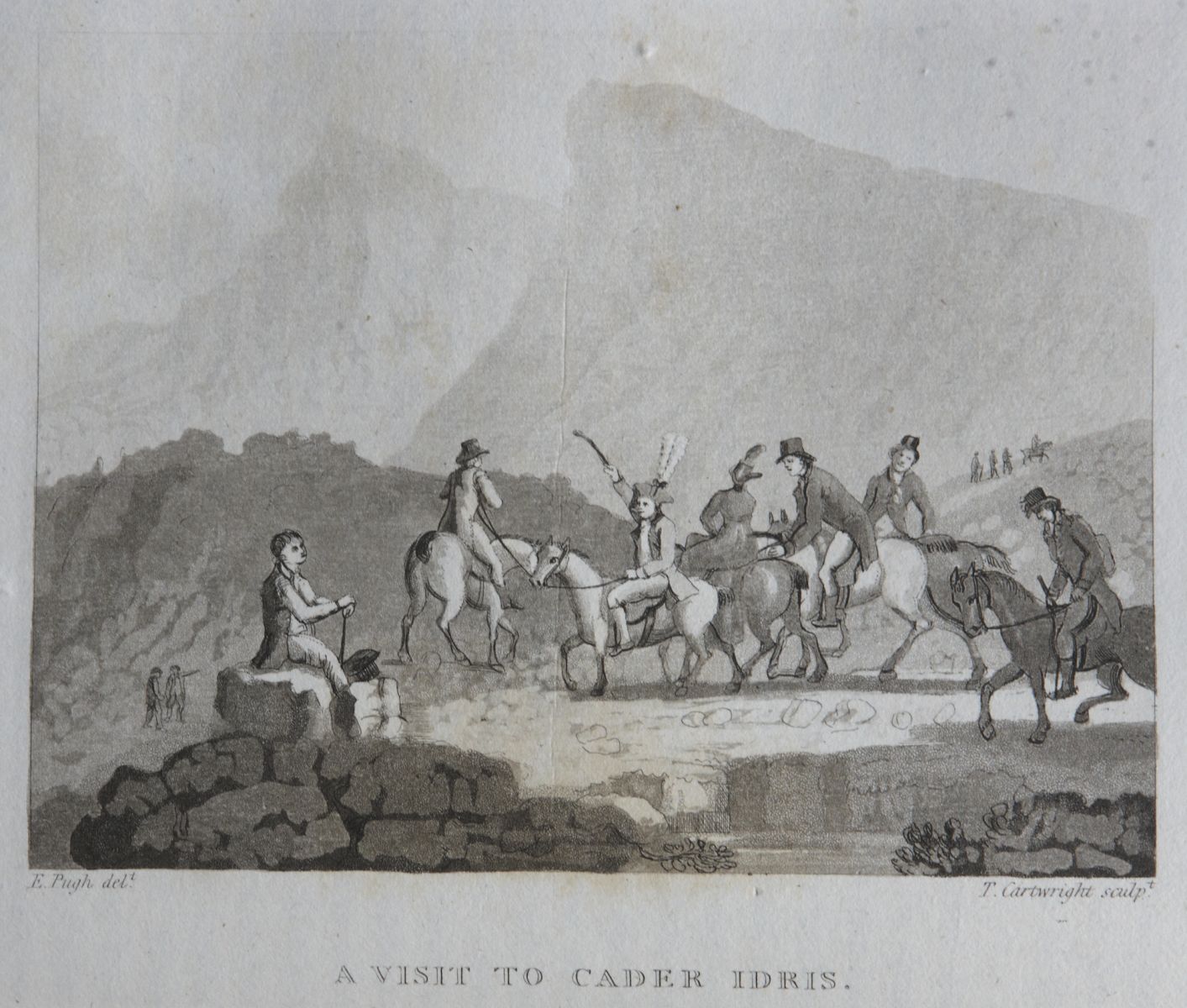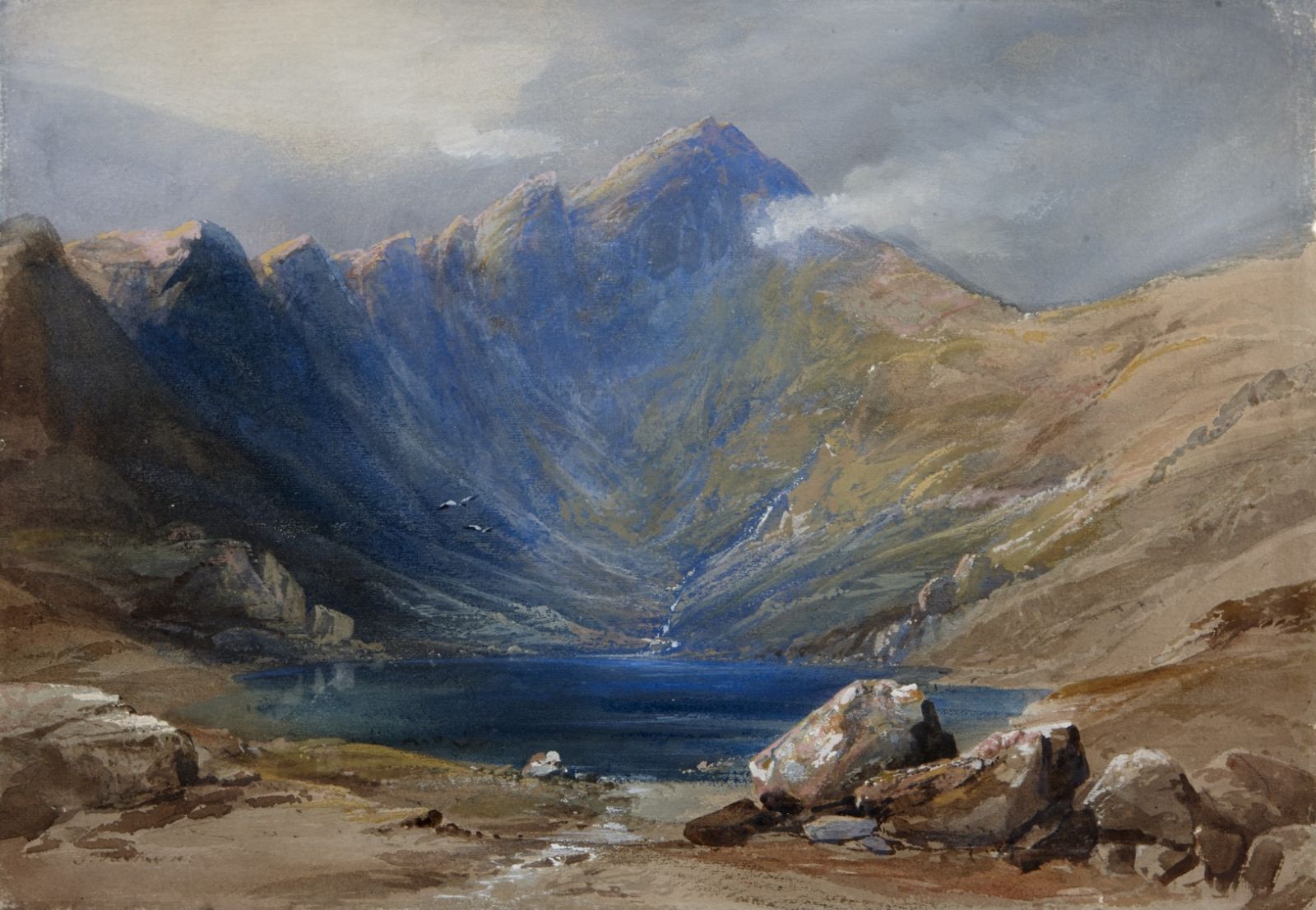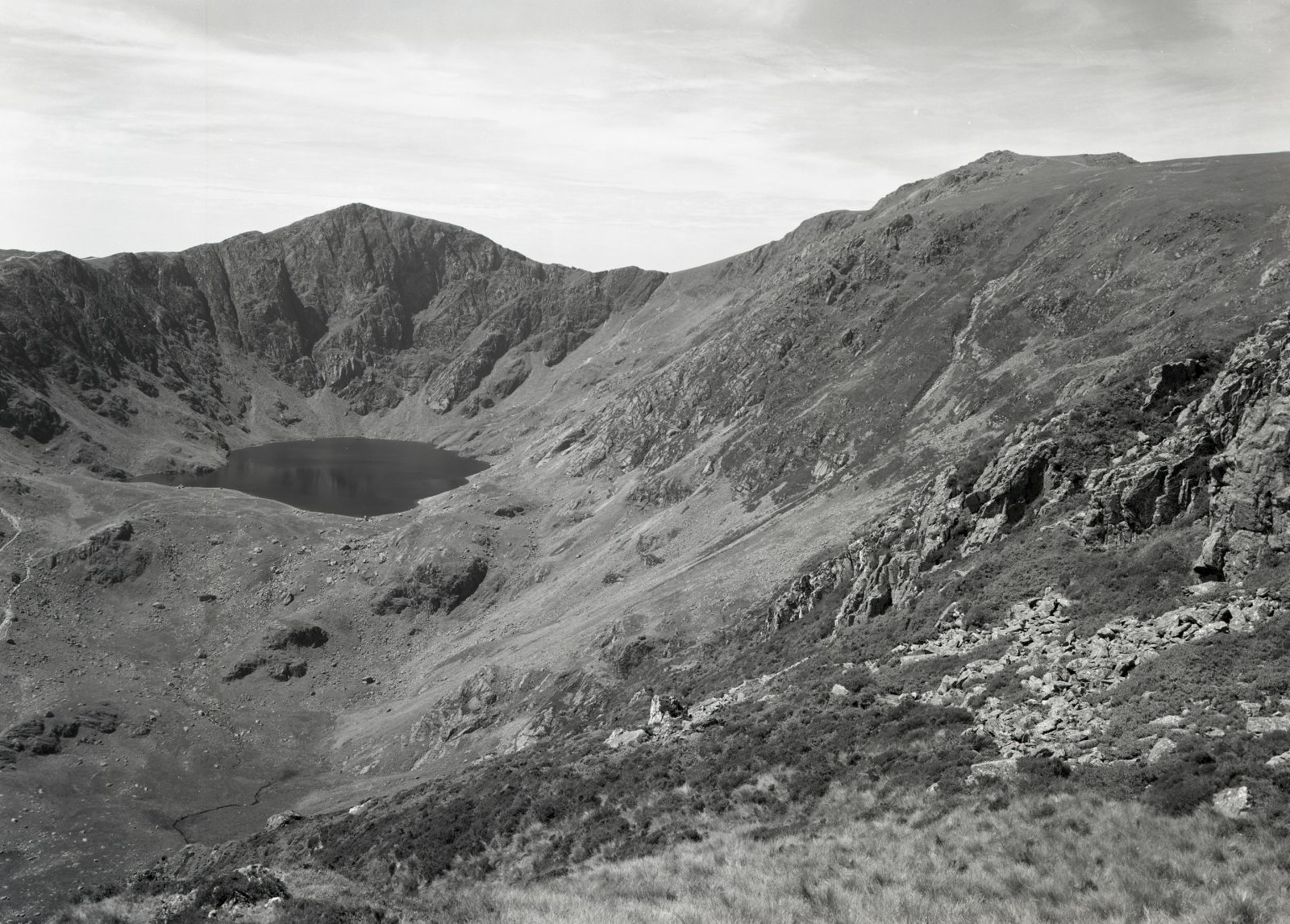Cader Idris: Wilson’s view
19 April 2018
Peter Bishop uncovers the fascinating world of artwork inspired by Cader Idris in Snowdonia National Park

Richard Wilson, Llyn y Cau, Cader Idris, c.1765, Oil on canvas, 50cm x 72cm, Tate Britain, Reproduced by permission of Tate Britain, London.
The Snowdonia National Park was created in 1951. Earlier, in 1765, the Welsh artist Richard Wilson (1714-82) painted a subject within today’s National Park, Llyn y Cau, Cader Idris. In this oil painting, Wilson retains enough of the classicising light to allow one of the most desolate (but potentially sublime) locations in north Wales to be immediately accessible and non-threatening. A number of visitors are depicted in the classical manner. In the middle foreground a figure with a telescope can be seen scanning the distant horizon. They are using the latest portable optical technology that had recently become available in London. His long shadow indicates that an early morning ascent has been made. One of the visitors is seated sketching the view towards the summit peak. Others are scattered through the landscape. There is another person, who is not a member of the visiting party, standing close to the seated artist with a grazing animal. The use of a temporary summer pasture at this altitude was not an uncommon sight in the eighteenth century but is rarely seen today.
Wilson’s viewpoint is from Mynydd Moel (863 m) a mile east of the summit of Pen y Gader (893 m). In the following years visits to Cader Idris became increasingly popular among artists and tourists who recorded their visits in sketchbooks and in written tour accounts. The heyday coincided with the fashion for making a picturesque tour and recording romantic scenery. Many artists toured north Wales as travel to the Alps became difficult due to the Napoleonic wars. In 1798 JMW Turner trudged up Cader Idris in search of Wilson’s viewpoint but saw little due to the dreadfully wet weather conditions.
Wilson arrived at the viewpoint on Cader Idris by pony, coming up from Dolgellau – a distance of five miles. In 1801, William Bingley (1774-1823) recorded his descent down the same route and the use of ponies on this path:
The path in this direction is sufficiently sloping to allow a
person to ride even to the summit. A gentleman,
mounted on a little Welsh pony had done this a few
days before I was here.
William Bingley, North Wales, London, 1814, pp.350-351
Bingley hired a guide for his ascent of Cader Idris, and this was a common feature on ascents of Snowdon too.

Edward Pugh, A Visit to Cader Idris, 1816, Aquatint, 11cm x 14cm, in Edward Pugh, Cambria Depicta, London, 1816, p206.
Edward Pugh (1763-1813) reproduced an aquatint in his book Cambria Depicta, published posthumously in 1816. It illustrates a touring party making an ascent of the mountain. The print reveals how popular this activity had become at this time. A total of twelve figures can be seen in this view. Robert Edwards (one of the guides to the mountain) can be seen directing the party from a pony.
He advertised his services as:
…conductor to and over the most tremendous
mountain, Cader Idris- to the stupendous
cataracts of Caen and Mawddach…with all
their beautiful romantic scenery…
Edward Pugh, Cambria Depicta, London 1816, p.207
Llyn y Cau was sometimes referred to as ‘Wilson’s Pool’ by visiting artists making their way past the lake on their ascent of the mountain. Cornelius Varley (1781-1873) inscribed this title beneath a watercolour he made from the Wilson viewpoint in 1803.

Samuel Jackson, Llyn y Cau, Cader Idris, c.1833, Watercolour, 28cm x 39cm, private collection.
Samuel Jackson (1794-1869) presents a view of the lake and the vertical cliffs that rise above the enclosed pool. His viewpoint is much closer to Craig Cau than the one chosen by Wilson for his more expansive view. There are no figures present in the picture, but some birds flying above the lake are a reassuring presence.

Pete Davis, Cader Idris, 1996, Selenium toned gelatin silver print, 38cm x 56cm, private collection.
This photograph by Pete Davis (b. 1947) is one of a portfolio of twenty prints made over a period of two years. The project involved twenty climbs of the mountain in all weathers and seasons. The photographs were taken using a large format camera.
This photograph of Cader Idris is taken from the Wilson viewpoint and maintains an unbroken visual tradition to the present day. Cader Idris is a significant landscape in British art and is protected by its National Park status.
By Peter Bishop, artist, writer and lecturer.
